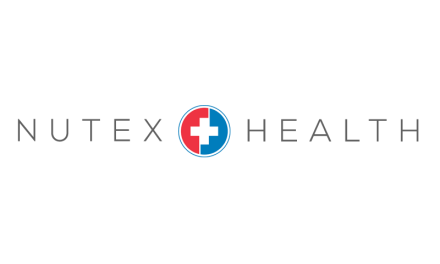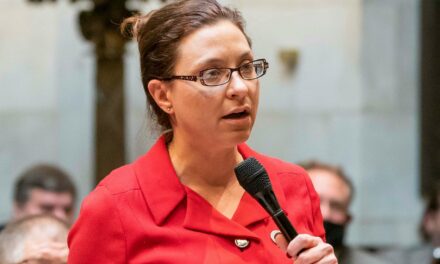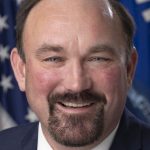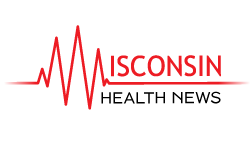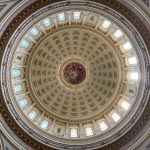
Covering Wisconsin prepares for Healthcare.gov open enrollment, public health emergency unwinding
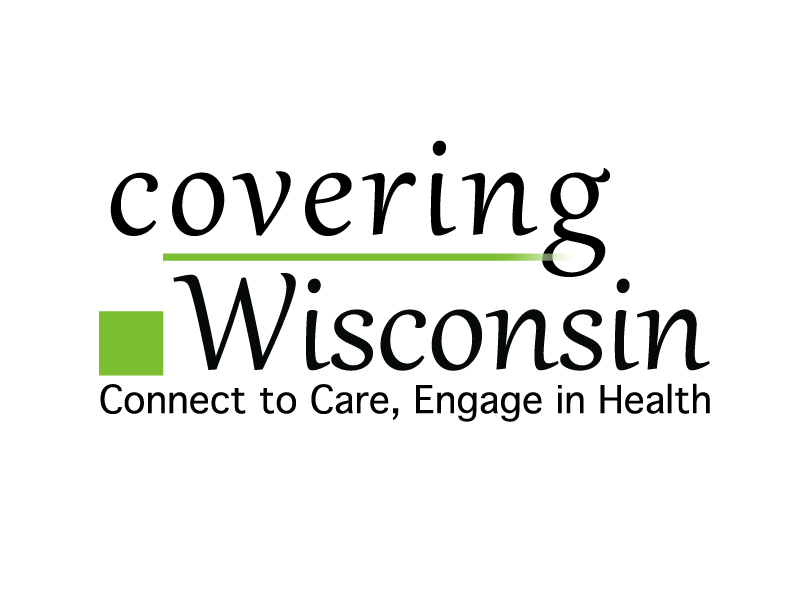
The federal government is providing Covering Wisconsin nearly $3 million—a record amount—ahead of the upcoming Healthcare.gov open enrollment period.
The state’s navigator agency wants to continue to “chip away” at the number of people without insurance, said Director Allison Espeseth.
“So many of those folks who are uninsured would be eligible for one of the public coverage options available to them, whether it’s the Marketplace or whether it’s for Medicaid or BadgerCare,” Espeseth told Wisconsin Health News. “There’s still opportunity there.”
The money comes as the organization also prepares for the end of the federal public health emergency for COVID-19, which will terminate Medicaid’s continuous enrollment policy and restart regular renewals.
Edited excerpts from Espeseth’s interview are below.
WHN: What will this funding allow you to do?
AE: This award has already started to allow us to increase capacity around the state, both for navigators, but also just the capacity to help spread the word since the role of the navigator is not just that one-on-one enrollment support. The navigator goes beyond that. It’s the awareness raising that is so critical to helping to reach those in the community that may not be aware of the Marketplace especially, but also with Medicaid and BadgerCare since navigators help with that as well. It’s that awareness that’s so critical. There are other kinds of enrollment assisters, which are really important. But the navigator is the one that goes out proactively and identifies needs in the whole host of communities around the state that need to be more aware. They do this through outreach, kind of local community outreach, through promotion, more media-kind of promotions, broad scale. We do this by training of professionals and just education, constant, just anybody, anywhere, anytime.
We have folks on our staff, which we didn’t have before, who are dedicated to partner relations, community events, doing presentations to all sorts of agencies. We have just brought on, a few months ago, somebody dedicated to our Milwaukee office, just for the Milwaukee and the southeast Wisconsin community … There’s just so many different partners and groups that need to know that we exist and that this is a resource for them.
WHN: How many are you hoping to hire?
AE: In preparation for the (public health emergency) unwinding, which we’re looking ahead that it would be next year, though, of course, we don’t know that for sure yet, (we’re) looking for a total of 40 individual navigators that we’ll have placed around the state. Right now, we’re not at that level. We’re getting closer. But it’s not just the navigators. It’s also using a lot of these dollars, actually, to support outreach and promotions and other resources.
WHN: Wisconsin saw roughly 20,000 more people sign up for Healthcare.gov coverage last open enrollment period. What led to that? Was that due to the subsidies available under the American Rescue Plan Act? Was it more dollars heading to navigators?
AE: I think it’s all of the above. And definitely, the ARPA subsidies, being able for us to be able to tell consumers that there is additional financial help available and that more people can now qualify for financial help is huge. It simplifies our message, which just makes our job a lot easier. We spend so much time in our day just making sure we’re on top of policy and the most current information and just, ‘What is the bottom line for the consumer? What do they really need to know?’ And sometimes as you might imagine, with policy being so challenging and complex, it can get difficult. How do you simplify this message to something that’s accurate, but easy to understand for most people? So with a policy like ARPA subsidies that really expanded this financial help available for everybody, it just makes it easy, right? We can just say, ‘Look, you are very likely eligible for financial help. You need to take a look. We can help.’ So, yeah, that has been really, I think, a key driver.
But I also want to say that it was really noticeable in moments in previous administrations when there were fewer dollars that were supporting messaging and promotions, both in Wisconsin, but also at a national level … Even as recently as 2020 … only about maybe a little more than 30 percent of consumers surveyed knew that the Affordable Care Act was still law. And it’s just because there’s been a lot of tumult with that law, a lot of just information to digest and understand and maybe it wasn’t always clear. There’s a lot of misunderstanding, and so I think it makes a difference. We definitely think and we know it makes a difference, having information shared, messages shared, not just from one group, from Covering Wisconsin, from the state, from the feds, from other agencies, other organizations, and in different ways, sharing the message that help is available and here’s how you can find it. We share messages and we create materials and outreach information that isn’t just the same … We try to share different images, different moments, different venues, just because you never quite know when it’s going to resonate with somebody. And so it’s not a one-and-done thing. You can’t just do an advertisement or do one outreach campaign and say, ‘OK, we’re good. We’re done.’ It doesn’t work that way. We know that people are only ready to look for coverage when they’re ready. And because that moment can happen at any point in the year, you have to have this continuous campaign of outreach and information … It’s just this constant process of getting the message out, getting the message out, getting the message out, to meet people where they’re at, which is someplace new every day.
WHN: Where do things stand with the unwinding of the public health emergency?
AE: The state put in place early on (the Office of the Commissioner of Insurance) and (Department of Health Services) Health Care Coverage Partnership … It really wasn’t in anticipation of this unwinding, but just the need for better cooperation both within state agencies but also the stakeholders around the state. But boy, it’s really paved the way and allowed for a platform, a foundation for people around the state so that state agencies and then stakeholders like us can come together on a very regular basis to talk through and just to make sure we’re all thinking about it. We all started thinking about it quite early on. When I was hearing and talking with other states and federal partners, it was clear to me that Wisconsin was definitely one of the early, early ones really thinking and talking about it. And so since that time, and with that, we have been working cooperatively with the state to talk about messaging, to talk about timeline, to talk about what’s the order of events and to really make sure that consumers don’t get further confused.
… One really exciting program that has come out of that coordination—and Covering Wisconsin is not the only one that is going to be participating in this, my understanding is that Medicaid HMOs will also be participating—is really coordinated sharing of member outreach … Medicaid HMOs, we’re reaching out to their members. Covering Wisconsin will be helping to reach out to those who aren’t in an HMO for a variety of reasons. And it’s that collective effort, in addition to what the Department of Health Services normally does and is required to do, this will be additional communication and outreach.
So, again, it kind of goes back to people needing to see messages multiple times and sometimes from different people to really resonate. Because we know sometimes people just aren’t paying attention or if they are in Medicaid and have never had to do this before, they’ve never had to renew, they may not be paying attention. They may not realize this is even a policy. So it’s going to take some extra effort.
WHN: Is there enough workforce available to help with this enrollment?
AE: Even prior to this upcoming moment, even just with the Marketplace coming online back almost 10 years ago now, it’s been a constant question of: What is the size of the workforce that we really need to to meet the need and demand out there? For sure, whenever I’ve asked that question and explored it and considered it, ‘What is it that we should be aiming for?’, it’s really always met with, ‘We haven’t reached it yet.’ We haven’t reached the capacity workload that we need either in Wisconsin or elsewhere. It’s a little bit of needing to just keep adding capacity as best we can.
There are both federal and state requirements in Wisconsin that navigators must meet. But it also means that these are folks that have the skills and ability to do it. And so working up to that process, it does take a little bit of time, which is why we’ve been starting for a while now and adding capacity over time.
I think what my ideal would be is something similar to what has been in place for Medicare for a while. So placement by county at least, so that you have one in every county or at least one that can serve each county. Right now, with navigators, even with 40 individuals, we wouldn’t have that. And so it’s partly working up to that capacity and being able to sustain it. Because I think that’s the other key. As you might imagine, bringing on capacity is one thing and then wanting to sustain it in the long term, even beyond the unwinding of the federal public health emergency, is another. We’d hate to lose that.
WHN: Do you expect any uptick in the uninsured rate?
AE: So transitions are really the key. Transitions are really where and why for so many people, this unwinding moment is gaining so much attention and rightful concern and focus. Like I said, I’m very pleased with the coordination that’s been happening between state agencies and community organizations and health plans to work together because of that recognition. This moment of transition between health coverage options is heightened with so many people needing to make this transition potentially. And so I think there’s a lot of groundwork that has been laid and is continuing to be laid … The state, from all that I’ve seen and observed, is doing all that they can to really just set in motion this plan and processes to just close those gaps and make these transitions as smooth as possible.

